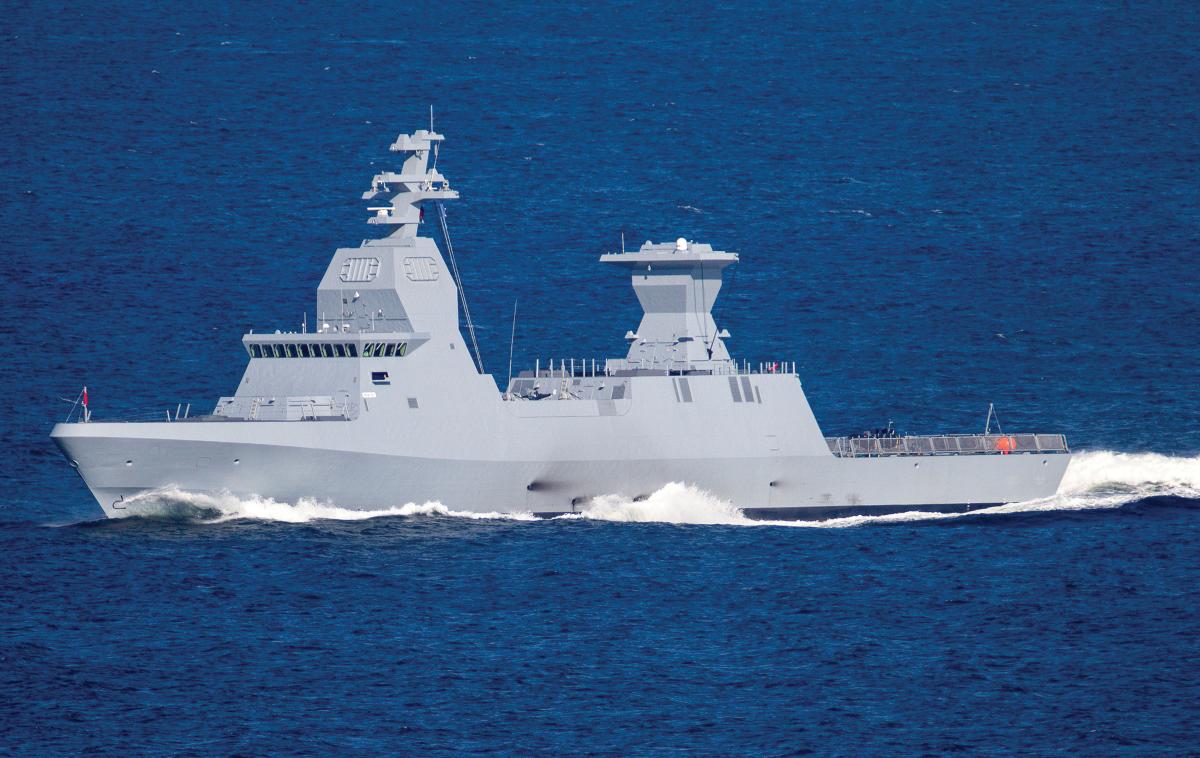Israel’s largest and most potent new surface combatant, the Magen, entered service in late 2020, arriving in the port of Haifa in December. The first of four planned Sa’ar 6–class missile corvettes, the Magen was designed to enhance the Israeli Defense Force’s offshore and exclusive-economic-zone patrol capabilities. The new corvettes promise to expand the overall reach of the Israeli Navy, offering seaborne protection for the country’s shipping lanes as well as its growing yet potentially vulnerable gas production industry in the eastern Mediterranean Sea.
The Magen was built in Germany by ThyssenKrupp Marine Systems under a contract signed in 2015 and reportedly valued at €430 million for all four ships. Construction began in 2018, with €115 million of the program’s cost paid for by the German government.
Displacing 1,900 tons, the 295-foot corvette has a 43-foot beam and is manned by approximately 70 personnel. The stealthy design incorporates a low radar cross-section with other signature-reduction measures.
The warships will be loaded with advanced naval weapons and sensors, the vast majority of which are of Israeli origin. The class is fitted with vertical launch system (VLS) weapons for both area and point defense to offer multilevel protection against incoming attacks. Tamir surface-to-air missiles help form the naval version of the Iron Dome air-defense system—known as C-Dome—which can intercept short-range rockets and missiles at sea. Longer-range Barak-8 (sometimes referred to as Barak-2) surface-to-air missiles enable engagements out to ranges in excess of 50 nautical miles. A single 3-inch gun will be fitted forward, and two smaller caliber Typhoon remote-controlled gun weapon stations are to be carried as well.
Two sets of torpedo tubes can be fitted for short-range antisubmarine warfare (ASW), and a medium hangar and flight deck are available to operate one MH-60 Seahawk-sized helicopter for airborne ASW and maritime patrol. Up to 16 anti-ship cruise missiles (reportedly either U.S. Harpoon or Israeli Gabriel missiles) are expected to be carried in canister launchers amidships. At the heart of the warship’s sensor suite is the ELM-2248 MF-STAR multifunction, active electronically scanned phased-array radar, along with an advanced electronic warfare and decoy system.
The Magen’s propulsion system incorporates two diesel engines from MTU, paired with two controllable-pitch propellers, providing a cruising range of 2,500 nautical miles and a maximum speed of 26 knots. Three sister ships, the Oz, Atzmaut, and Nitzhahon, are expected to join the Israeli fleet by the end of 2021.



